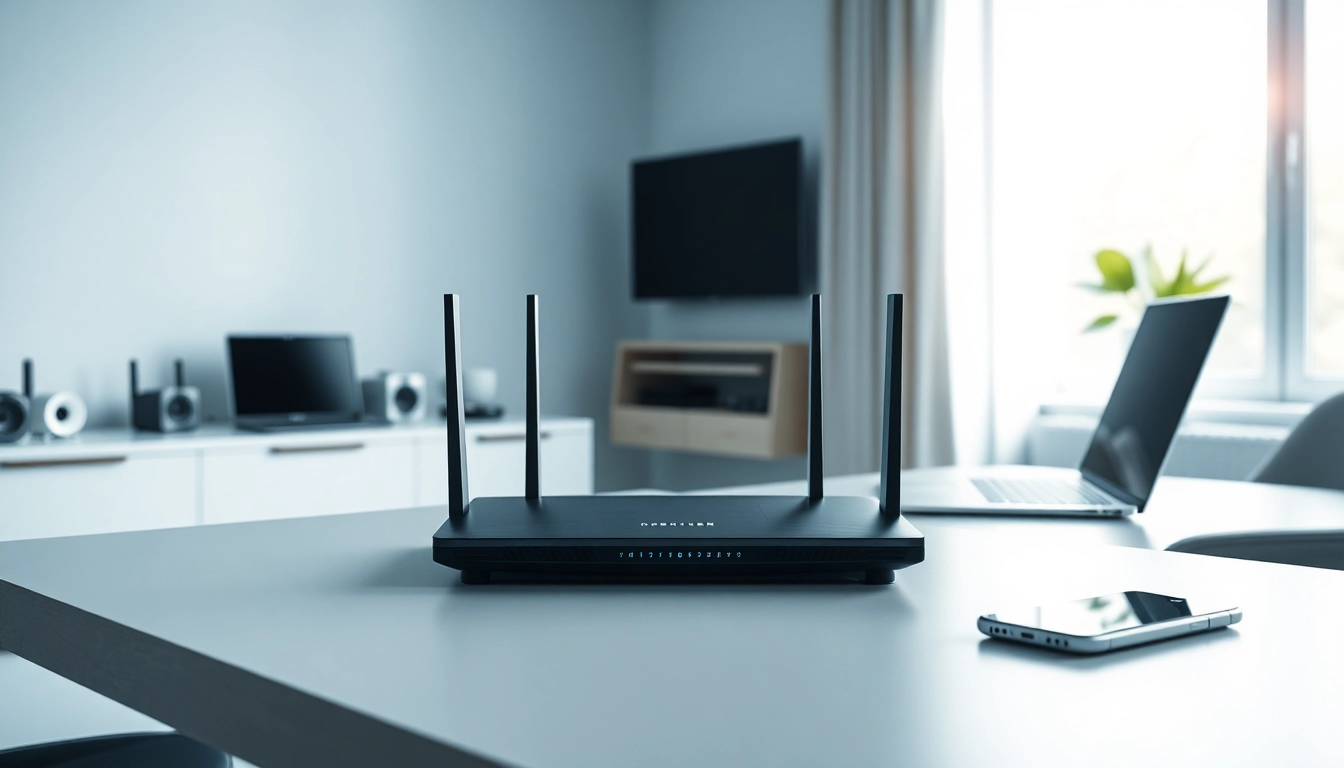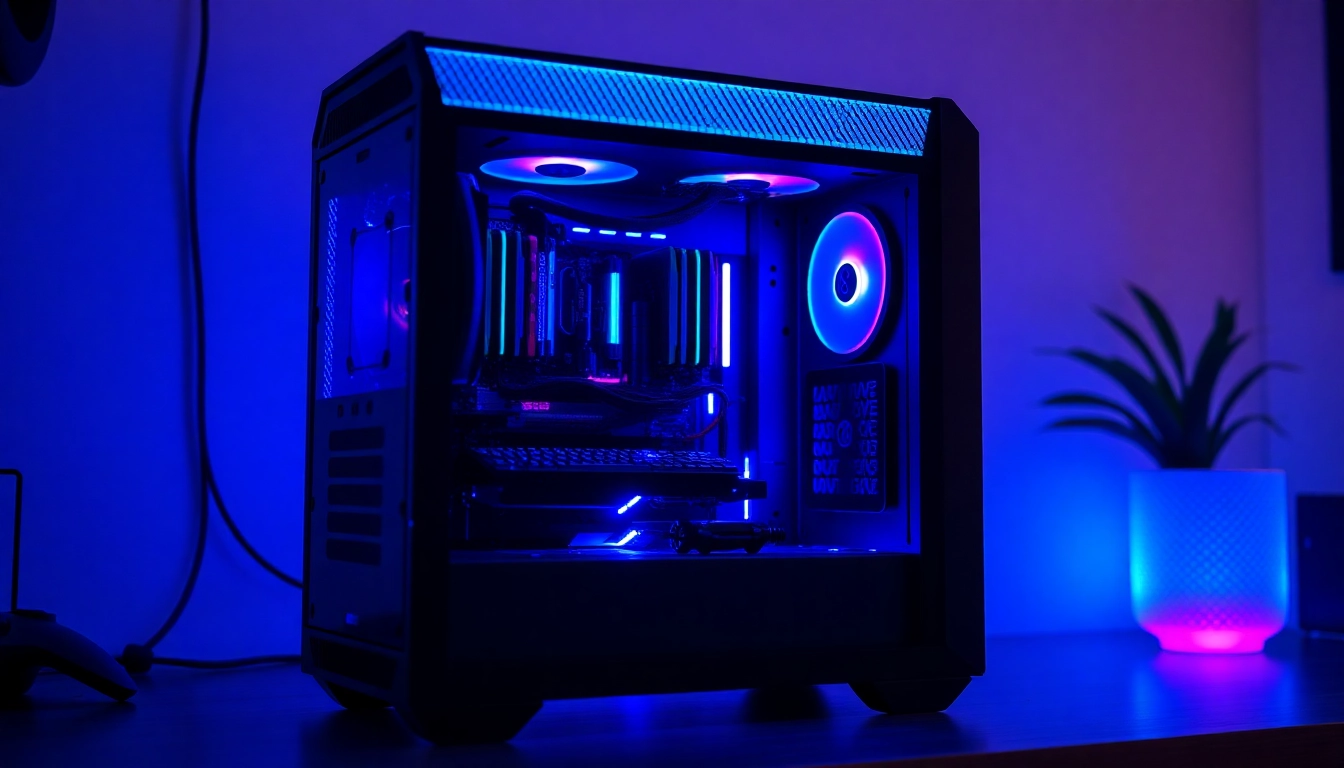Understanding the 5G Router
What is a 5G Router?
A 5G Router is a device that connects to a 5G network and provides high-speed internet access to multiple devices, both wired and wireless. Unlike traditional routers that rely on Wi-Fi or DSL connections, a 5G Router utilizes the latest generation of mobile network technology, enabling faster download and upload speeds while supporting a higher number of simultaneous connections. With the rollout of 5G technology across the globe, these routers have become crucial for households and businesses looking to leverage superior internet connectivity. For more information, visit 5G Router resources and insights.
Key Features of a 5G Router
5G Routers typically come equipped with several key features that distinguish them from their predecessors:
- High-Speed Connectivity: 5G technology offers speeds significantly greater than those offered by 4G LTE, making it ideal for activities like streaming high-definition video and gaming.
- Low Latency: The latency, or the time it takes for data to travel from the source to the destination, is drastically reduced in 5G networks, enhancing real-time interactions such as online gaming and video conferencing.
- Multi-Device Support: 5G Routers can efficiently manage connectivity for multiple devices, allowing households and businesses to connect smartphones, tablets, laptops, and smart home appliances seamlessly.
- Enhanced Security Protocols: Many modern 5G Routers incorporate advanced security features including WPA3 encryption and VPN support, providing enhanced protection against cyber threats.
- Mobile Flexibility: Many 5G Routers are portable, meaning they can connect to the internet virtually anywhere there’s a 5G network available, offering flexibility for users on the go.
How 5G Router Works
A 5G Router operates by connecting to the available 5G signal transmitted by nearby cell towers. The router uses a modem to decode this signal and provides internet access through both wired (Ethernet) and wireless connections (Wi-Fi). The core principles of its operation include:
- Reception: The router captures 5G signals and translates them into usable internet data.
- Distribution: It then distributes this data to connected devices using various protocols.
- Network Management: It manages bandwidth and prioritizes traffic, ensuring optimal performance and connectivity among devices.
The result is a fast, stable connection that empowers users to engage in activities that demand high bandwidth without interruption.
Benefits of Using a 5G Router
Faster Internet Speeds
The promise of 5G technology lies in its unprecedented speed capabilities. Users can expect download speeds that can exceed 1 Gbps under optimal conditions. For instance, a 5G Router can facilitate seamless streaming of 4K and even 8K video content, allowing users to enjoy media without buffering delays. Moreover, this speed makes large file transfers, cloud services, and online gaming much more efficient, providing a superior experience to what 4G networks can offer.
Enhanced Connectivity for Multiple Devices
5G Routers are designed to handle numerous devices simultaneously without performance degradation. In an age where smart home technologies are becoming the norm, a single 5G Router can connect numerous gadgets—from security cameras to smart lights—creating a smart ecosystem at home or in an office. The ability to maintain robust connectivity while managing multiple devices is a considerable advantage for users looking to optimize their environment.
Low Latency Advantages
Latency, the time delay before a transfer of data begins following an instruction, is significantly reduced with 5G Routers. While typical 4G connections may exhibit latencies of around 30-50 milliseconds, 5G can reduce this to as low as 1 millisecond. This change is revolutionary for applications requiring real-time feedback, such as online gaming, augmented reality (AR), and virtual reality (VR) experiences. Consequently, users can enjoy a level of responsiveness and fluidity that was previously unattainable.
Choosing the Right 5G Router
Factors to Consider
When selecting a 5G Router, there are several factors to evaluate to ensure that you choose the right one for your needs:
- Speed Requirements: Consider your internet usage. Serious gamers or streaming enthusiasts may require higher-speed routers.
- Coverage Area: Evaluate the size of your home or office to ensure adequate range. Look for routers with robust signal distribution features.
- Device Compatibility: Ensure that the router’s specifications align with the devices you plan to connect.
- Price Point: Set a budget, as 5G Routers can vary widely in cost based on features and performance.
- Future-Proofing: Choose models that offer upgradeable firmware or adaptability to evolving technologies.
Comparing Different Models
Comparing different brands and models is crucial to making an informed purchase. Focus on the following aspects:
- Speed Ratings: Check the maximum upload and download speeds.
- Number of Users Supported: Evaluate how many devices the router can handle simultaneously.
- Signal Strength: Look for independent reviews on range and reliability under various conditions.
- Installation and Setup Ease: User-friendly interfaces can make or break your initial impressions of a router.
User Reviews and Feedback
User reviews can provide insights into the real-world performance and reliability of different 5G Routers. Websites and forums often feature opinions from users who share their experiences regarding setup, customer support, and long-term performance. Pay attention to comments about durability and software updates, which can impact the router’s lifespan and efficiency.
Setting Up Your 5G Router
Installation Steps
Setting up your 5G Router generally involves a few standard steps:
- Unbox and Position: Find an optimal location for your router, ideally centralized within your space for the best coverage.
- Connect the Router: Plug the router into a power source and connect any necessary cables, such as Ethernet cables if required.
- Power On: Turn on the router and wait for it to initialize. This may take a few minutes.
- Connect to the Network: Using your smartphone, tablet, or computer, search for the network name (SSID) displayed on the router and connect.
- Access the Configuration Page: Open a web browser and enter the router’s IP address to access its configuration settings for custom settings.
Configuration Settings
After the initial setup, you may want to adjust the router settings:
- Change Default Password: Ensure security by changing the default admin password to a strong, unique password.
- Set SSID: Customize the network name (SSID) to something unique that reflects your preferences.
- Enable Security Features: Activate WPA3 encryption and firewall settings for enhanced protection.
- Prioritize Devices: Use Quality of Service (QoS) settings to prioritize bandwidth for specific devices, ensuring smoother performance for activities like gaming or streaming.
Common Troubleshooting Tips
Facing issues with your 5G Router? Here are some common troubleshooting tips:
- Restart Your Router: A simple restart can often resolve connectivity problems.
- Check Signal Strength: Ensure that the router is positioned correctly and that there are no obstructions interfering with the signal.
- Firmware Updates: Regularly check for firmware updates that can enhance performance and security.
- Reset to Factory Settings: If problems persist, resetting the router to its factory settings can resolve misconfiguration or software issues.
Maximizing the Performance of Your 5G Router
Best Practices for Network Optimization
To ensure your 5G Router is performing at its best, consider implementing the following best practices:
- Regularly Update Firmware: Keep your router’s firmware up to date to fix bugs and vulnerabilities.
- Optimize Channel Settings: Manually adjust Wi-Fi channels to reduce interference from nearby networks.
- Use Wired Connections for High-Demand Devices: Connecting devices like gaming consoles or PCs via Ethernet can improve speed and reduce latency compared to wireless connections.
- Monitor Network Traffic: Use apps or built-in features to monitor device usage and identify bandwidth hogs.
Integrating Smart Home Devices
5G Routers are ideal for smart home setups due to their capacity to connect numerous devices efficiently. Here are some tips for seamless integration:
- Ensure Compatibility: Check that your smart devices support 5G connectivity.
- Create Device Groups: Organize devices by purpose (e.g., lighting, security) for better management.
- Utilize Automation: Employ automation features to control devices based on schedules or other triggers for convenience and energy efficiency.
Monitoring and Maintenance
Consistent monitoring and maintenance will prolong the life and enhance the performance of your 5G Router:
- Regularly Check Connections: Periodically inspect wiring and connections to avoid disruptions.
- Perform Speed Tests: Test your internet speed occasionally to ensure you’re receiving the service your plan promises.
- Evaluate Coverage Areas: Periodically reassess the placement of your router to optimize signal strength throughout your area.
- Stay Informed: Keep current with updates in 5G technology and features that could enhance your router’s capabilities.




